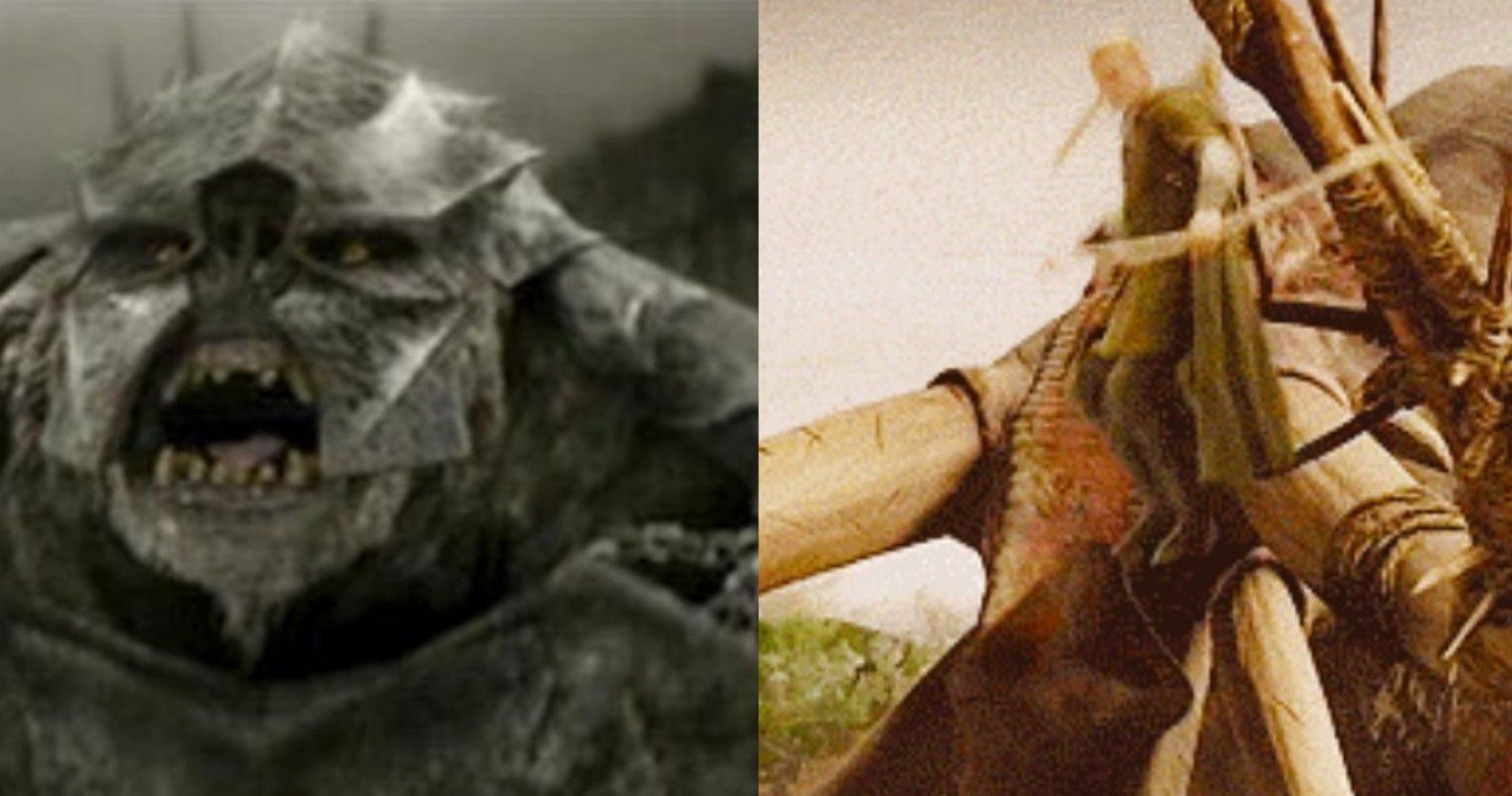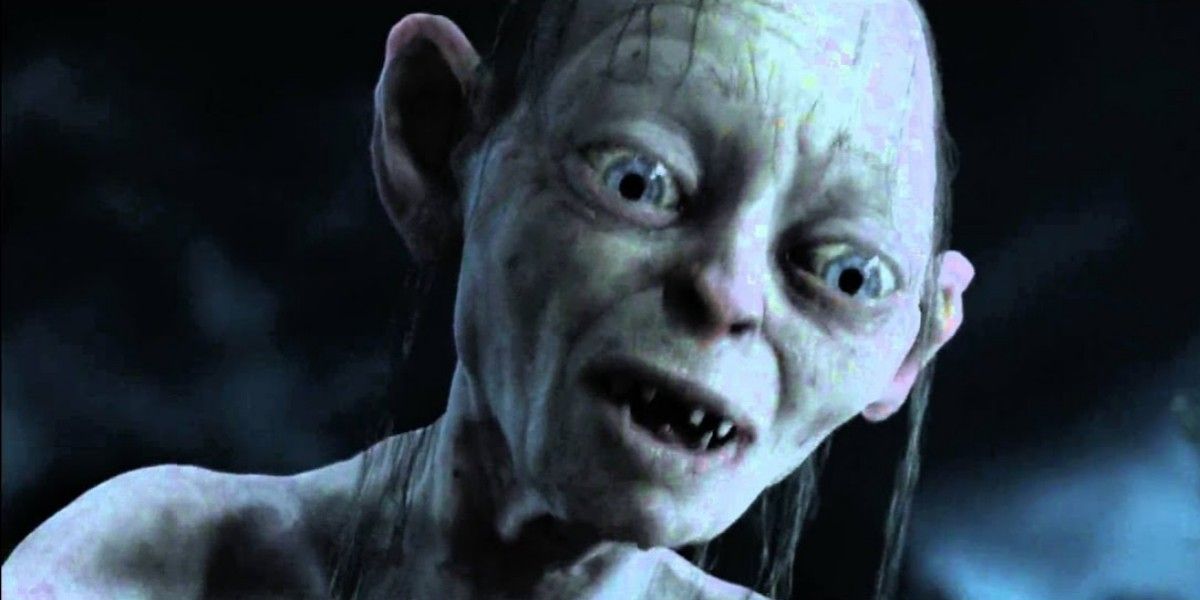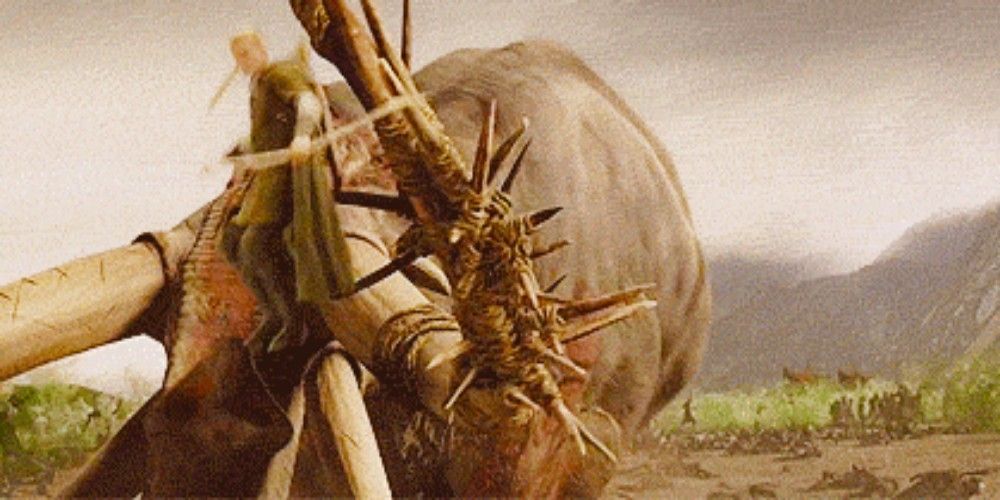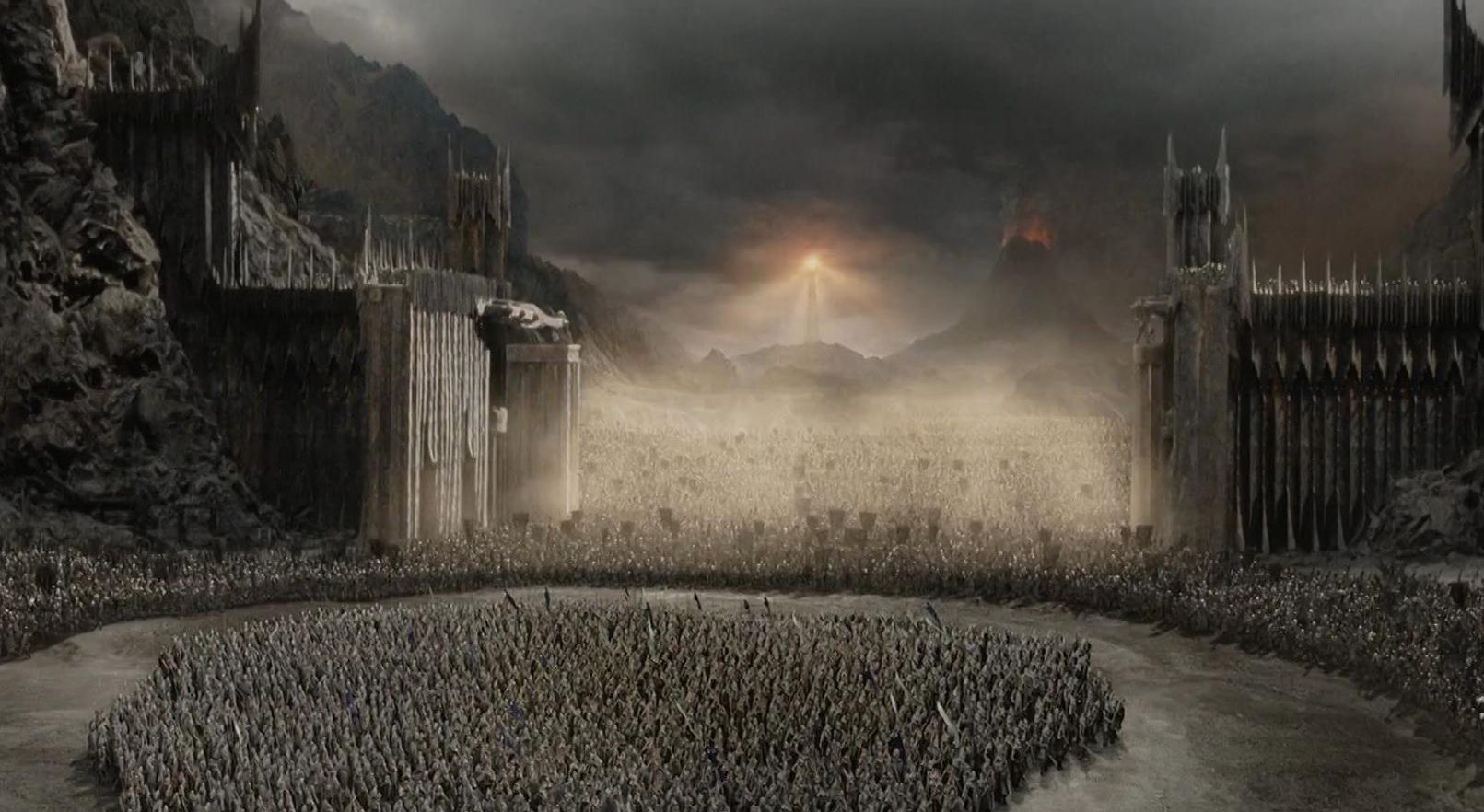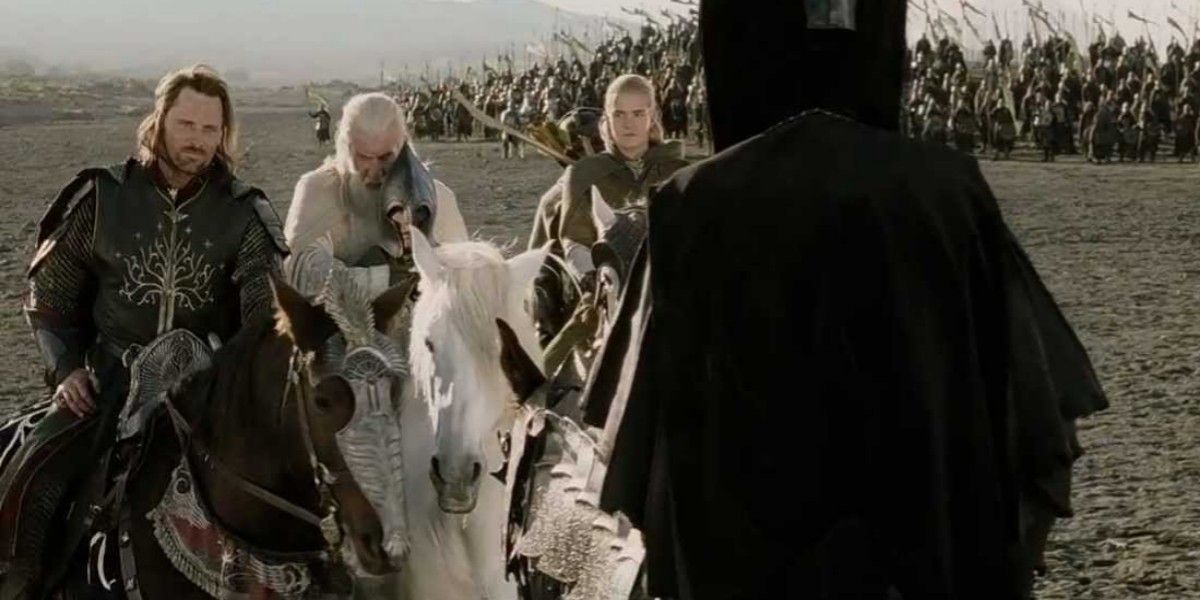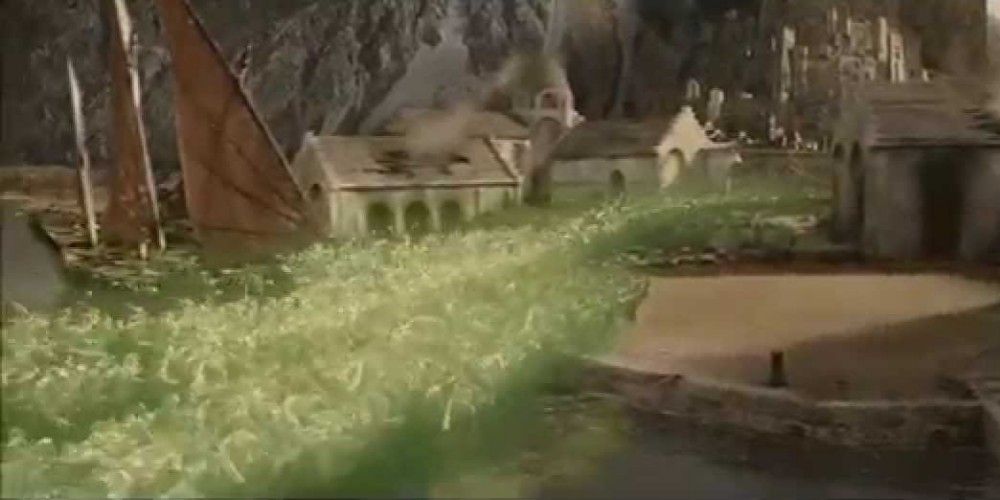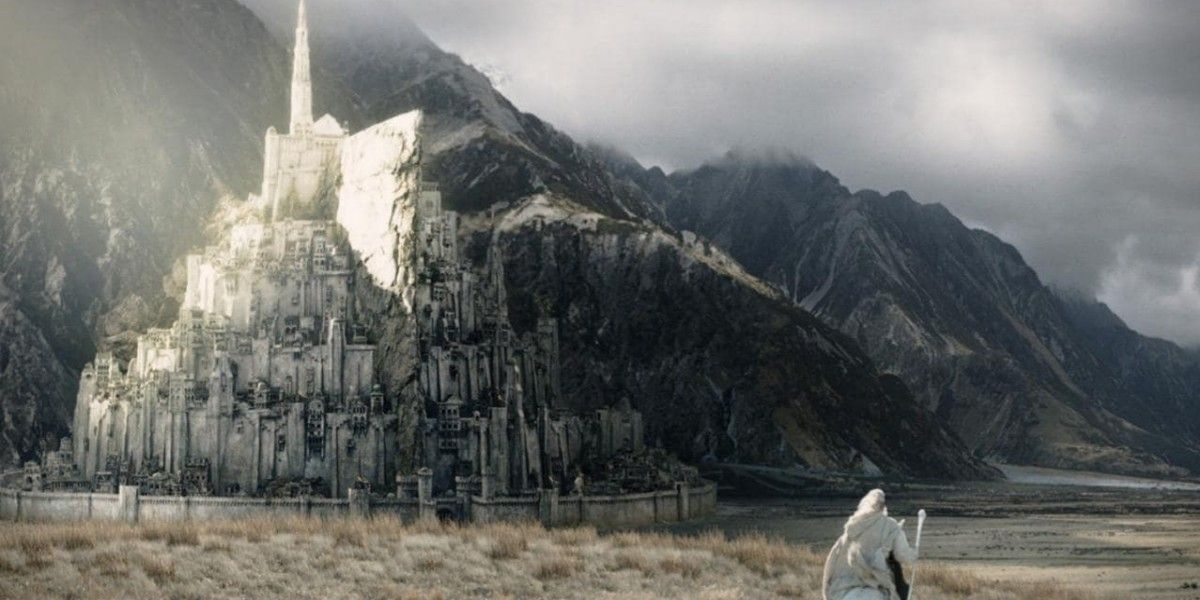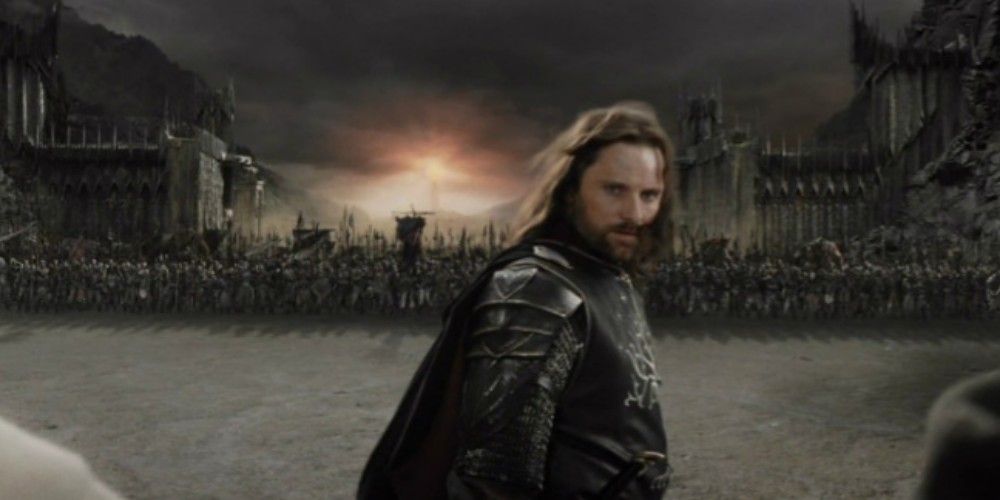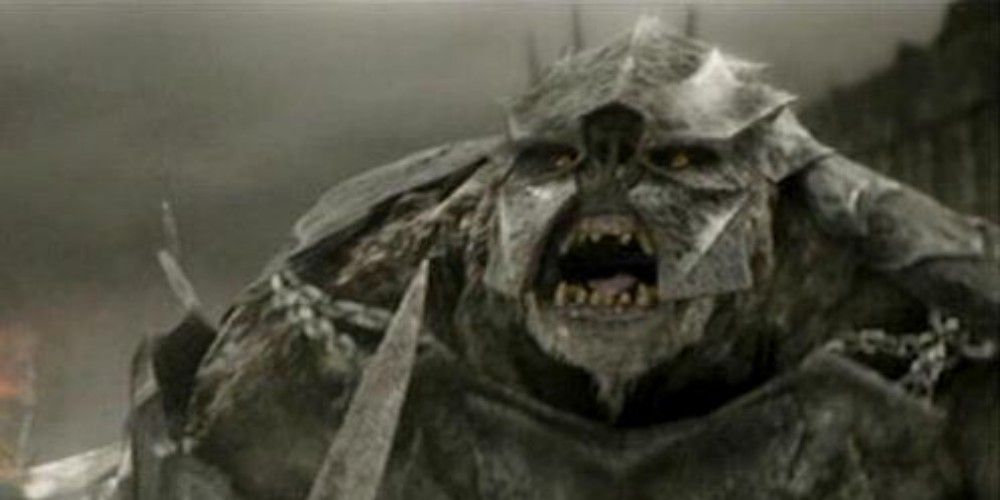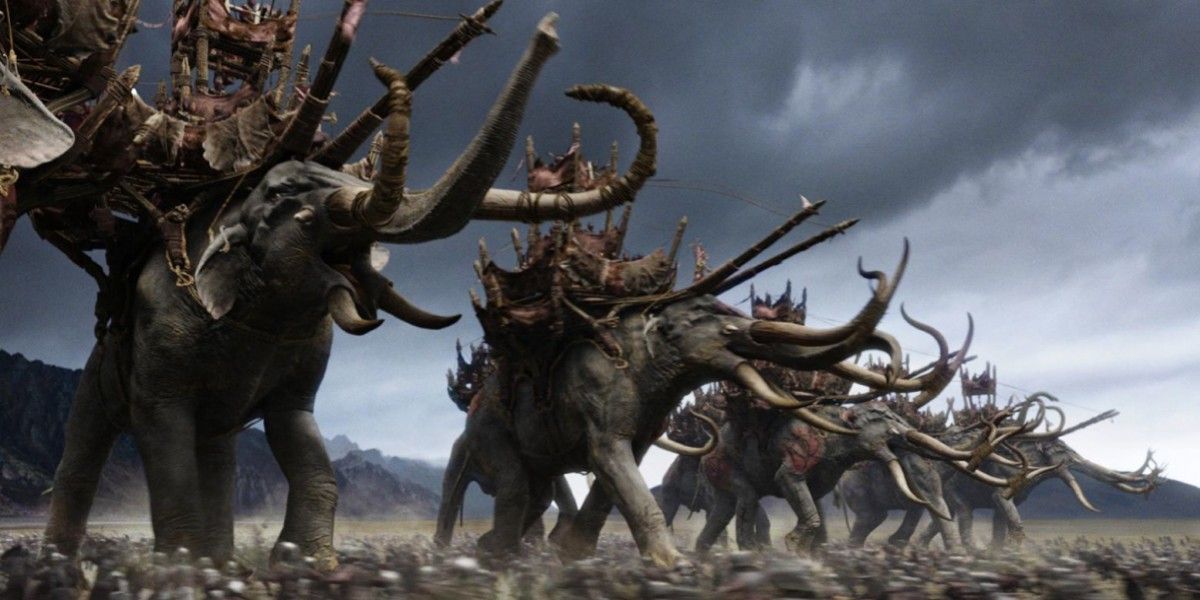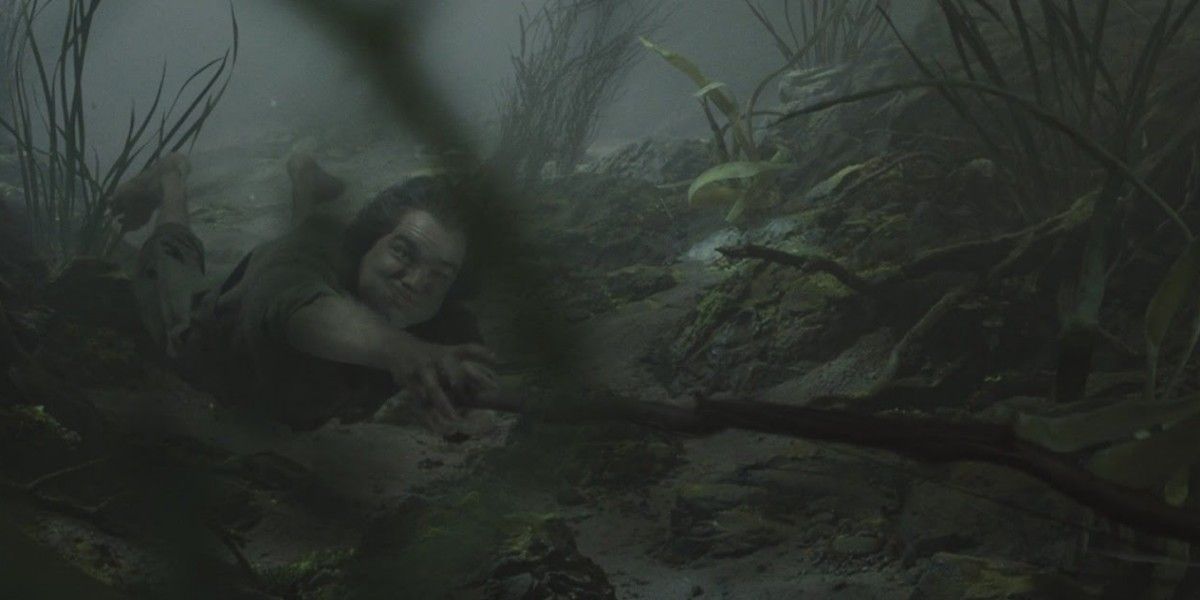Peter Jackson's Lord of the Rings trilogy is a landmark series of films. Combining sprawling locations, stunning cinematography, beautiful sets, emotional storytelling, and masterful acting, they bring J.R.R. Tolkien's high fantasy novels to life in a way no one thought was possible. In the early '00s, they pioneered a lot of the computer AI taken for granted in genre films today that utilize a lot of CGI.
As well as they still hold up today, there are problems inherent to their visual way of storytelling that haven't aged as well as fans would hope. Even Return of the King, which won the coveted Academy Award for Best Picture in 2003, has its share of cinematic issues. From cartoonish looking trolls, to Legolas surfing down the trunk of an oliphant, here are ten reasons why it hasn't aged well.
GOLLUM
It was pretty risky making one of the main characters in the trilogy completely created using CGI. Though Andy Serkis supplied Gollum's movements with motion capture technology and provided his voice, everything else was computer generated. At the time it was done, it was a bold move that paid off because Gollum had a great deal of personality.
What was innovative at the time has become dated, as Gollum's movements as he guides Frodo and Sam to the end of their journey in Mordor don't seem to have the weight of reality. They're entirely too fluid, and at times his skin looks flat rather than reflective with things like moisture, perspiration, or shadow.
SUPER LEGOLAS
The archery prowess of Legolas Greenleaf can't be disputed, but it's often overshadowed by the CGI used to enhance his movements. While it doesn't ever reach The Hobbit levels of ridiculous acrobatics, it gets close. A particular crime against CGI occurs when he surfs down an oliphant's trunk after shooting it on the head.
Making Legolas look like he's in the middle of Super Smash Brothers rather than Middle-Earth is distracting at the very least, and completely pulls the viewer out of the fantasy of whatever he's doing. All we notice is the bad CGI, not that he did an amazing feat.
THE BATTLE SEQUENCES
In prior fantasy and historical epics, in order to do suitably impressive battle sequences with thousands of soldiers, thousands of extras had to be employed. These actors had to be fitted with thousands of suits of armor, and the scenes had to be shot incorporating all of them to create an enormous crowd. It was expensive and unruly, but it looked believable when it was done well.
Peter Jackson pioneered the computer AI that was used to create the thousands of soldiers necessary to show his battles in the proper scale. From orcs to Rohirrim, all of the fores fighting in the Return of the King are impressive in their existence, but not always in their execution because they all look the same.
THE MOUTH OF SAURON
As though the trilogy isn't already long enough, with the the third film having the longest running time, there are extended versions of them that put the whole viewing experience past the nine hour mark. This leaves room for all sorts of eyesores to stand out, like in the extended version of The Return of the King.
Before the epic final battle outside the Black Gate, we get treated to a scene of Aragorn, Gandalf the White, and Legolas having a parley with the Mouth of Sauron. This scene clearly shows The Mouth as a dummy dressed in armor sitting on a horse in front of Gandalf.
THE UNDEAD ARMY AT PELENNOR FIELDS
Aragorn and company know that the only way that the forces of Men and Elves can defeat Sauron's dark armies is to have a dark army of their own. The Army of the Dead is as dark as it gets, comprised of cursed men that live in a constant spectral state due to their avarice in life.
They appear in the Battle of Pelennor Fields to help Aragorn and his allies face Sauron's armies, and they wash over the platoons of orcs, goblins, and Uruk-hai like an overturned glass of Hobbit mead. The effect isn't so much chilling as confusing, and all the ghosts look identical, adding to the peculiar look of the scene.
THE GLOSSINESS AT MINAS TIRITH
The battle for Minas Tirith is definitely an exciting skirmish in the film, where Gandalf has a suspenseful run in with the Witch King, and Pippin gets to prove his mettle. However the entire series of scenes is diminished by whatever glossiness is happening throughout the city.
Like a lens flare on steroids, the glossy/glow nature of the filter on these scenes is so different from every other battle sequence in the film as to be distracting. As a viewer, it almost makes you want to shield your eyes to be able to focus more on the events unfolding.
ARAGORN AT THE BLACK GATE
The entire sequence where Aragorn and the forces of Men face down Sauron's dark armies is one of the most stirring in the third film, if not all of the trilogy. There's so much emotion culminating in those moments that it's almost enough to make you forget how weird the scene looks right before he charges.
For one thing, the lighting is extremely strange, with the antagonists and protagonists lit in such different ways as to make them look spliced together in the frame. The texture of the ground is also odd, and there's something that seems out of place about the perspective of the shot.
THIS GUY
While some fantasy lovers may not like "some guy in a suit" type of practical effects, they have an edge over completely computer generated antagonists, like this troll that Aragorn faces in Return of the King. Part of the reason the orcs and Uruk-hai aged so well in The Fellowship of the Ring is because they were actors wearing prosthetics.
Unfortunately, the same can't be said for Mollok here. The King of the Trolls, he gets smited by Aragorn in battle, which is a good thing because it means we don't have to look at him trying to barge into Gondor for very long. For being the King of the Trolls, he isn't any more exceptional than any of the other trolls seen in the film.
THE OLIPHANTS
As impressive as the oliphants looked at a distance in The Two Towers, when we see the gargantuan beasts up close in Return of the King, they look completely separate from every other portion of Sauron's dark forces. The Easterlings mounts stand out and not in a good way.
Compared to everything else, they look the most cartoonish. Not only do that, but they look entirely too smooth, and the texture of their skin looks like it's made of rubber. Unfortunately, they're so big that they draw the most attention, reminding viewers that they're just CGI and don't really exist.
DEAGOL AND THE FISH
In the third film, we get to understand a bit more about Gollum's backstory, including a flashback to when he first found the One Ring. At that point, he was a halfling like Frodo and Sam. He went by Smeagol, and together with Deagol, were fishing in a lake when a rogue fish dragged Deagol over the side of the boat.
The entire sequence of him being pulled by a fish through the murky water looks out of place, and it's very clear the actor isn't being filmed underwater at all. It pulls the viewer out of the film despite the intriguing storyline, and detracts from Gollum's tale of woe.

